Trips from Prague – Cheb
Of all the towns in West Bohemia I know Cheb the best because my in-laws live there so I’ve had regular trips to see them and the town which in German is known as “Eger”. There’s a lot of history here but I would struggle to commit a whole day. Instead, if you are going to visit the nearby spa town called Frantiskovy Lazne or if you are driving to Karlovy Vary then consider Cheb as a place to spend some time. It’s two hours by car or three by train from Prague.
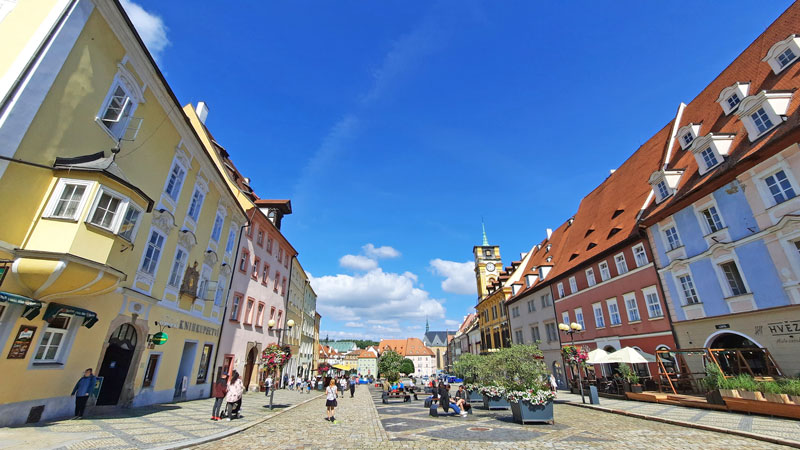
Going Way Back
Recorded history tells us that there was a fortified Slavic settlement here in the 11th Century but that it was under German control in the 13th Century. This “is it German or is it Czech?” question would roll on throughout the history of Cheb.
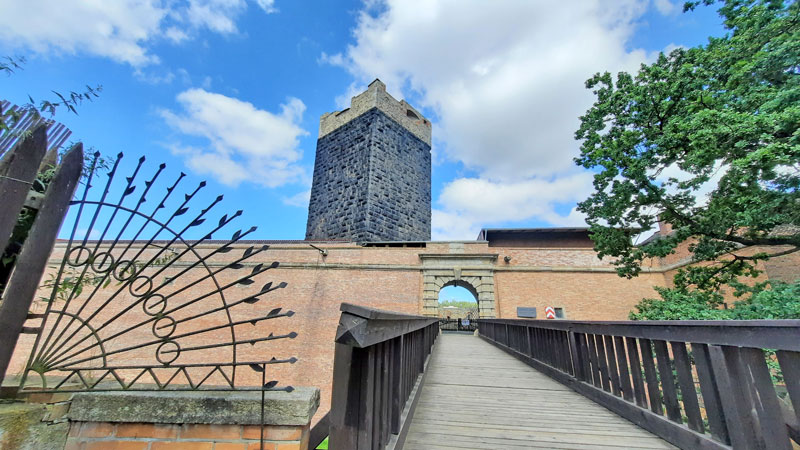
Even though by the 14th Century it was considered part of Bohemia, the Catholic Diocese of Regensberg in Germany claimed the town as well despite the German inhabitants leaning towards the more protestant “Hussite/Utraquist” faith. The historic part of town still retains a Bavarian feel. The Castle and Black Tower date back to the 13th Century.
Albrecht and the Museum
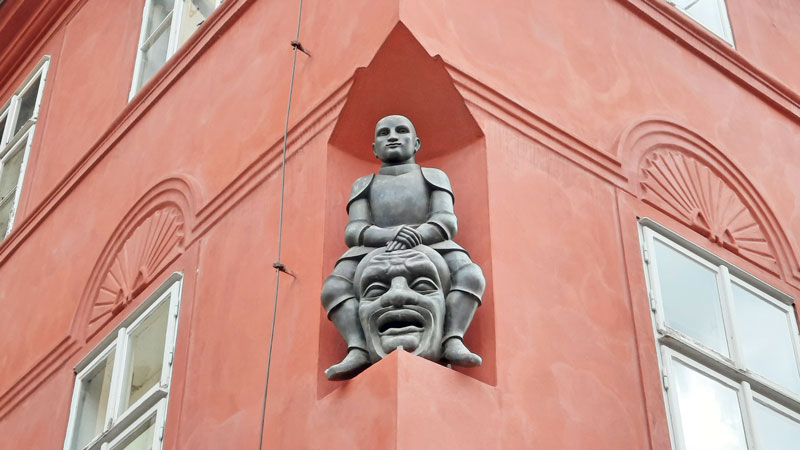
The next really famous thing to happen wasn’t until 1634 when the Commander of Catholic forces during the Thirty Years War, Albrecht Wallenstein, was murdered in Pachelbel’s House (Number 3 on the square) which is now the Cheb Museum. Only 13 years earlier the Emperor had gifted land in Prague to Albrecht which would become today’s Wallenstein Palace and Gardens but apparently he became a political threat and was assassinated. Opposite that house is an orange building and on the corner is a piece of art by Jaroslav Rona called David and Goliath (pictured).
World War Two
In the 1930s the residents of Cheb were largely 90% ethnic German and with the downturn in the local economy caused by the US Banking crash of 1931 (the US had provided many loans to Germany for servicing war debt) they were screaming for autonomy and separation from Czechoslovakia so they could join Germany. You’ll often hear the name “Sudetenland” associated with the German speaking parts that wanted independence. The September 1938 signing of the Munich Agreement allowed this to happen with the resulting ejection of many thousands of ethnic Czechs.

On a visit to Cheb on October 3rd 1938 (3 days after the Munich Agreement was signed) Adolf Hitler stood in the upper balcony window of the orange building pictured above and gave a speech to the crowd. To cut a long story short, when Germany lost the war the Czechs came back and kicked out all the Germans, nationwide more than 2 million ethnic Germans would be exiled.
Why Visit Cheb
There’s a balance of historic things to see, nice riverside walks and some things to do for example.
The main square has several restaurants, bars and cafes often frequented by German tourists coming to Cheb to fill up on cheaper fuel and have a meal while they are here. In December it’s the site of a Christmas Market.

The Fort Gardens (it’s a collective name for several smaller gardens by the river) is a 1km stretch of park land bordering the river which has been divided into a childrens play area, an amphitheatre, formal gardens and two cafes. You can cross the river either by road, dam or by one of two footbridges.
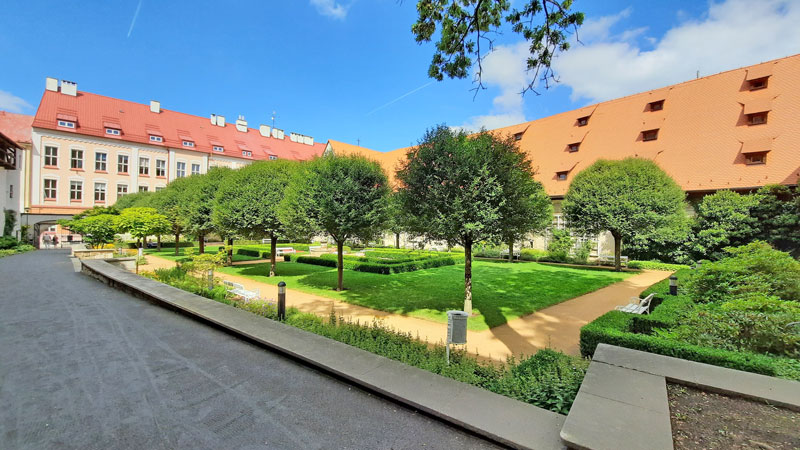
The garden of the Church of the Assumption of the Virgin Mary is a wonderfully peaceful place to sit. But walk to the rear of the garden and you’ll find statues that were in prominent places during the communist period including Lenin, Julius Fucik (Czech Communist journalist whose likeness was captured on the Prague Stalin Statue) and a military border guard.
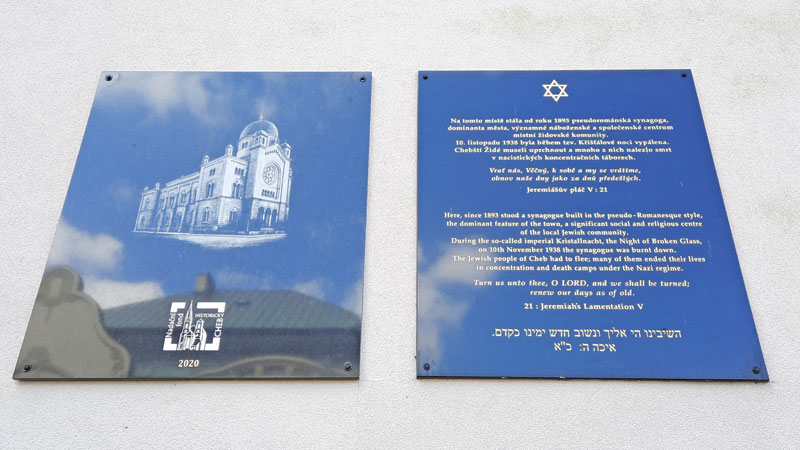
If you think that “Krystalnacht” only affected German Jews then you might be interested to go to the junction of Hradebni and Obrnene Brigady where you’ll find a plaque which shows what the synagogue looked like before it was burned down on November 9th 1938.
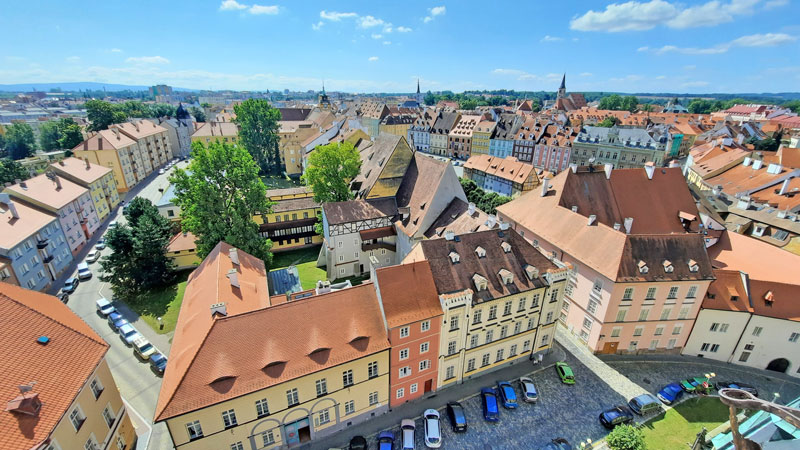
If you want a bird’s-eye view of the city then visit the tower of ST Nicholas Church. You’ll need a CZK20 coin at the time of writing and there are a lot of steps. The building interior is monitored by cameras.
On the other side of the river you’ll find a public area for BBQs, and athletic track and on the hill behind is a rope climbing centre (adults CZK200, kids CZK120). You can find more details on the Lanove Centrum website.
Something Related or a Few Minutes Away
Day Trips – Frantiskovy Lazne Spa Town
Day Trips – Karlovy Vary Spa Town
Art and Culture – Jaroslav Rona Sculptures